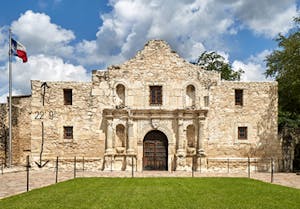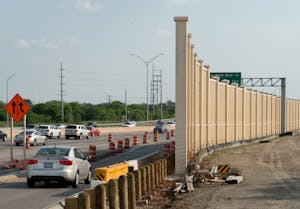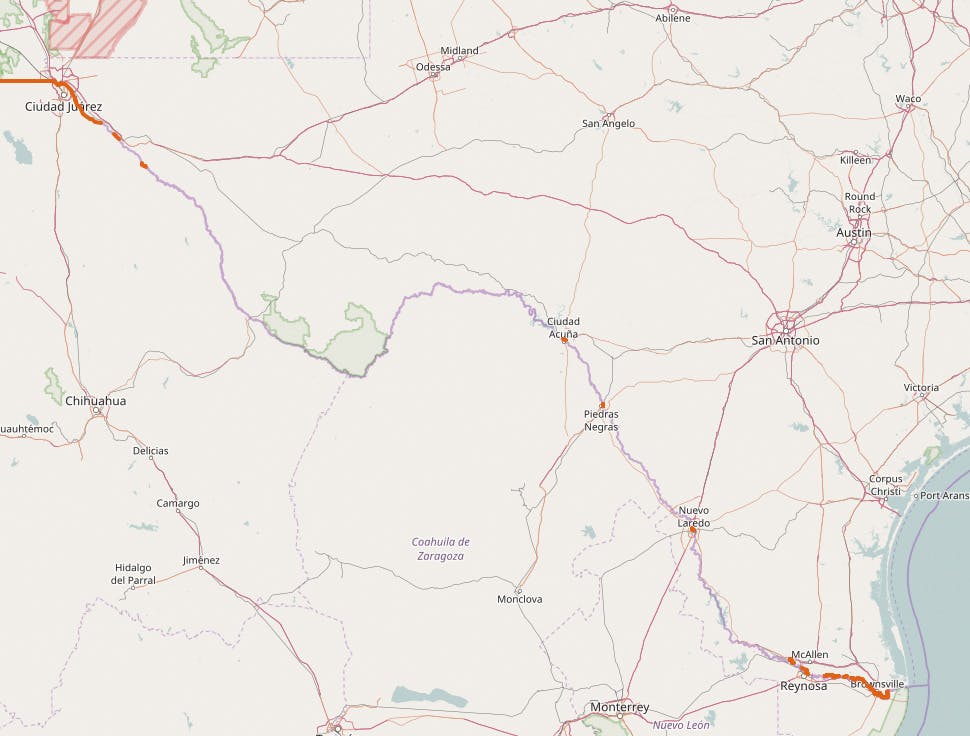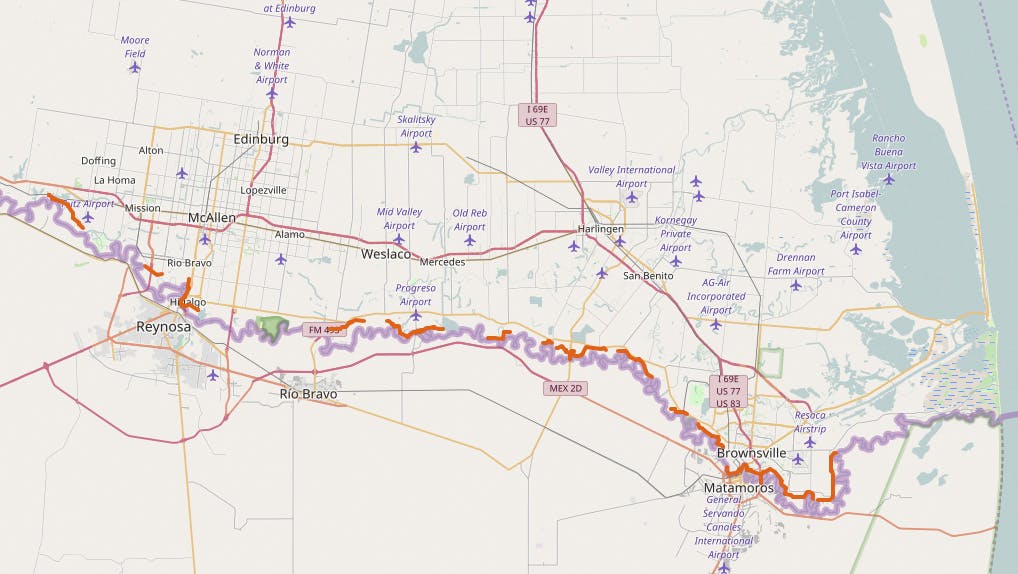Several days ago, I attended a Border Unity Rally on the international bridge between Del Rio and Ciudad Acuña. The mayor of Del Rio, as well as the alcalde of Acuña, spoke of how the two cities were one community merely separated by a river and a national border. There also were bipartisan speakers. Referencing President Trump, U.S. Representative Joaquin Castro, a San Antonio Democrat, said no president could break that unity apart. Republican Congressman Will Hurd, also from San Antonio, said Trump’s border wall was not the best way to create national security. My short video captures the flavor of the rally, but there was a bigger picture that it prompted me to think about.
Our current politics are a far cry from when President Dwight Eisenhower visited Acuña in 1960 to praise the construction of the Amistad Dam. “We know what this will mean to people on both sides of this river, in flood protection, in production of power, and in production of more irrigated lands. But it is more than this; this is a symbol of what two countries working together in peace can accomplish,” Eisenhower said from the balcony of the Acuña municipal building. A crowd of thousands was gathered below, and his speech was broadcast by radio to all of Mexico. While it is true that Eisenhower deported hundreds of thousands of illegal immigrants in a program with the unfortunate name Operation Wetback, the deportations were done in cooperation with the Mexican government.
All things considered, Saturday’s rally was not exceptional. The sister cities of Del Rio and Acuña have a combined population of more than 216,000, but only about one hundred people were on the bridge to hear the speakers. The politicians talked about the evils of a border wall that could separate communities. I could not help but notice, however, that the bridge is secured with a twelve-foot tall chain-link fence to keep pedestrians from jumping over the rail and onto U.S. soil. Even if they did, they would then be in the no-man’s land secured by the border fence in the photograph above. As far as fences go, I’ve seen more sinister looking ones around used car lots. The Del Rio border fence looks a lot like the one that protects the state archives warehouse on Shoal Creek Boulevard in Austin. Because the fence is slatted, you can easily see through it to the verdant landscape beyond, several hundred yards groomed and landscaped by the U.S. Border Patrol. Then I started thinking about how much different it might be if the fence was replaced by Trump’s “big beautiful wall.”
I’m going to leave the impact of the wall on wildlife and humans for some other day. Today, I just want to look at the wall. Let’s start with the official Border Patrol request for bids to build demonstration walls. They are lengthy, but here is the essence of one of the two requests as I’ve boiled it down:
- The wall design shall be reinforced concrete.
- The wall design shall be physically imposing in height. The government’s nominal concept is for a 30-foot high wall. Any potential offeror should consider this height, but designs with heights of at least 18 feet may be acceptable.
- It shall not be possible for a human to climb to the top of the wall or access the top of the wall from either side unassisted.
- The wall design shall include anti-climb topping features that prevent scaling.
- The wall shall prevent digging or tunneling below it for a minimum of six feet.
- The wall shall prevent/deter for a minimum of one hour the creation of a physical breach of the wall (e.g. punching through the wall) larger than 12 inches in diameter or square using sledgehammer, car jack, pick axe, chisel, battery operated impact tools, battery operated cutting tools, Oxy/acetylene torch or other similar hand-held tools.

I almost forgot, the specifications also demand: “The north side of the wall (i.e. U.S. facing side) shall be aesthetically pleasing in color, anti-climb texture, etc. to be consistent with the general surrounding environment.” Remember, the wall not only has to be big, but also beautiful (at least on our side).

So what does a 30-foot tall wall look like? The Great Wall of China is much thicker than anything Trump wants, but in most spots it is only about 25-feet tall. The Texas cradle of liberty, the Alamo chapel, had walls that were only 22-feet, 9 inches at the time of the siege
Not far from where I live, the local government is expanding the freeway and putting up sound barriers. Here is a photo I took of one. According to the Central Texas Mobility Authority, this wall is twenty feet tall, ten feet shorter than the proposed border wall.
Whether you look at the Alamo or the freeway sound barrier, they are short compared to what President Trump says he wants out of a border wall. CNN earlier this week did it’s own imagining of what a border wall would look like. They were generous and set the height at twenty feet.
Whatever the height or design, when you say border wall, you’re talking Texas. Almost all of the border from the Pacific Ocean to El Paso already has a fence of some type. Trump’s wall would just replace the existing fence with a solid wall along most of the border. However, very little of Texas has any fencing. A Tucson, Arizona, newspaper spelled it out last year:
Texas border: 1,241 miles
Pedestrian fences: 114.8 miles
Vehicle barriers: .2 miles
Unfenced border: 91 percent
If you want to see where the existing fences are in Texas, openstreetmap.org has a very interesting interactive map from which I drew this one. The red spots indicate where the fences now exist. Everything else is Rio Grande.

For a closer look at the Lower Rio Grande Valley:

Those little red lines apparently required more than 400 eminent domain lawsuits to acquire the land. Texas Attorney General Ken Paxton earlier this week told the Dallas Morning News that he is fine with the Trump administration using eminent domain to take land for the wall so long as the property owners are fairly paid. “It’s a public purpose providing safety to people not only along the border, but to the entire nation,” Paxton said.
Exactly where, when, and how the wall will be built is still subject to a lot of questions. Homeland Security Secretary John Kelly in February said the wall will be transparent and consist of a lot of cameras and sensors. Interior Secretary Ryan Zinke created confusion this week when he also said there may not be a “physical wall” and added in a speech: “The Rio Grande, what side of the river are you going to put the wall? We’re not going to put it on our side and cede the river to Mexico. And we’re probably not going to put it in the middle of the river.” Lost in translation, that statement suddenly got turned into Zinke saying Trump wanted to build part of the wall in Mexico. That was not the case at all, as shown by the original reporting from E&E News: “Electronic defenses may be more appropriate in some areas, Zinke said. Others with imposing physical features may not require additional reinforcements.”
Because of a 1970 treaty with Mexico, the United States cannot build a permanent structure in the flood plain of the Rio Grande. In some places, that means the wall would be half a mile from the river and the boundary line. The Border Patrol keeps the Mexico side of the Del Rio fence trimmed not for aesthetics but so officers can spot unauthorized immigrants trying to enter the country. But on my drive to Del Rio, I looked across the vast sea of brush in South Texas and thought of how imposing a barrier it forms with thick undergrowth and leaves and thorns. Yet, immigrants fight their way into it, and some die each summer—by some estimates, 5,000 between 1998 and 2012.
As to where the first segments of the wall are going, CNN reported that there will be 14 miles of new wall in San Diego, California, and 28 miles of new levee wall barriers and 6 miles of new border wall in the Lower Rio Grande Valley. A Reuters report last month said the first walls would be built in San Diego, El Paso, and the Lower Rio Grande Valley, but would be followed up in phase two with 151 miles of walls in the LRGV, Laredo, Tucson, El Paso, and Big Bend. The Austin American-Statesman reported that a budget document shows initial planning is for “28 miles of a new levee wall system near McAllen at a cost of $498 million and 6 miles of new border wall for $146 million in the Rio Grande Valley as well as 28 miles of wall and replacement fencing near San Diego.”
Trump has asked Congress to cut $18 billion from the federal budget to pay for his wall, but as of this week, congressional Republicans are not buying into the plan. U.S. Senator John Cornyn of Texas, the second ranking Senate Republican, told Politico that Congress needs to know more than just a demand for a wall. “What I would like to see is a plan for how the money would be spent and a good faith discussion about what border security is really composed of,” he said. “We haven’t had that.” The Statesman said Cornyn told Texas reporters that Trump is speaking “metaphorically” when he talks about the wall.
Last, but not least, Jay Root and Todd Wiseman of the Texas Tribune released a documentary on the wall this week, which covers immigration and drug trafficking.






